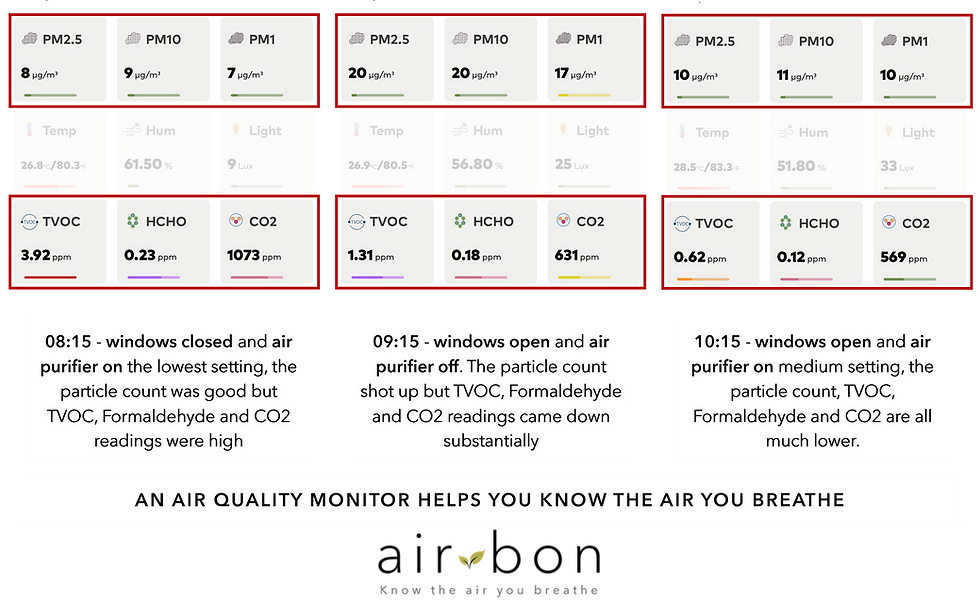Why we should be monitoring air quality
- Airbon Admin

- Jul 22, 2021
- 2 min read
Want to know how using an air quality monitor determines the action you take to improve the air?
I have an old Victorian home with thick walls which, at the time of purchase, had the original forms of ventilation (chimneys breasts, air bricks) blocked for insulation. Prior to the sale, it was empty for a while so suffered from damp, mould, woodworm and stale air. To improve the air quality and mitigate any further damage to the framework, all the chimney breasts and air-bricks were unboarded, the woodworm/damp were treated and a dehumidifier was set up.
To stay on top of the damp, cheap hygrometers (£2 each) were put in all rooms so the humidity levels could be easily seen.
Two bedrooms already had MVHR systems under the windows so a cheap humidistat was added to automatically switch it on when the humidity is high. When the kitchen was renovated, the recirculating kitchen fan was replaced with a fresh air duct.
With fresh air coming through the air vent and the humidistat kicking in regularly to exchange air when humidity was high, surely I would be ok.
Not so!
The Air Quality Monitor in my bedroom displayed levels of Total Volatile Organic Compounds (TVOC) and CO2 that ranged from severe to hazardous.
Our triple-glazed windows were closed but the internal door was open all day except at night. The issue was that the MVHR system wasn’t letting in enough fresh air. Plus the bedroom was newly decorated (new wardrobes, new floorboards etc) and freshly painted. The furniture was off-gassing and it may continue to do so for two years!
And so I became obsessed with my monitor, keeping track of the data and logging when the window was open.

Monitoring the air quality is an ongoing task. Just this morning, I saw the same thing with TVOC and CO2 levels but today’s pollution levels are really high outdoors. Opening the windows improved the TVOC and CO2 levels but particle pollution more than doubled. The only way I could ensure low reading of particles, CO2 and TVOC was to open the windows AND have my Sqair air purifier running. The image below shows the difference this makes to the air quality in my bedroom. Although running a purifier with the windows open isn’t as efficient as it would be in a closed room, it was effective enough to keep the air safe for me to breathe. The folks at Smart Air (manufacturer of the Sqair air purifier) have open data on their website showing the tests they ran with the windows open.


Comments